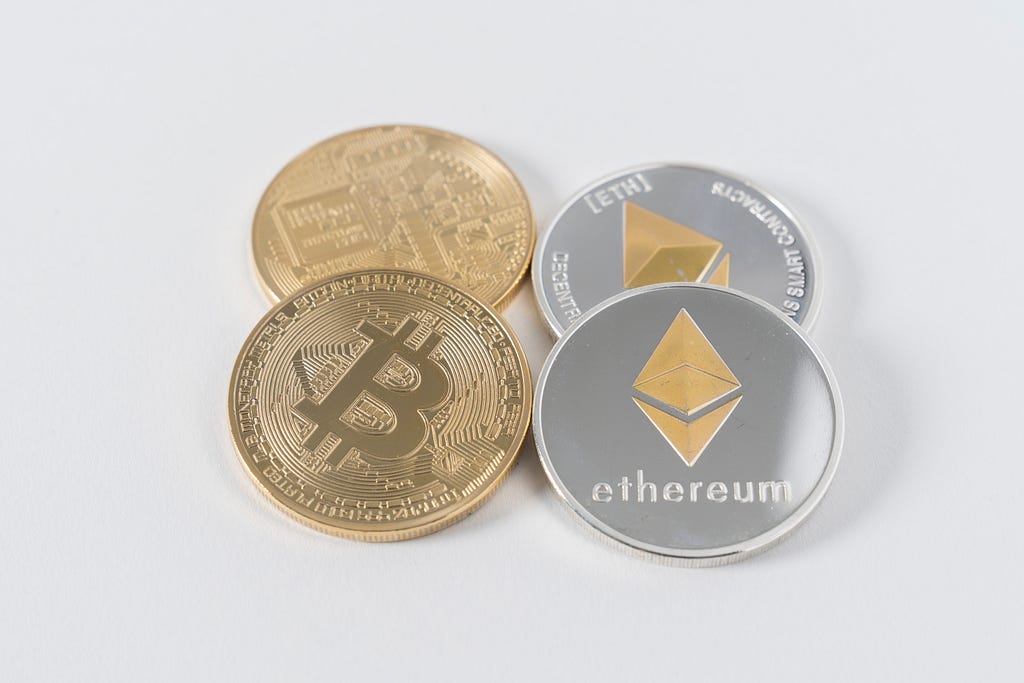Latest news about Bitcoin and all cryptocurrencies. Your daily crypto news habit.
 Photo by Thought Catalog on Unsplash
Photo by Thought Catalog on Unsplash
Cryptocurrencies have been around for a while now. Following the first-yet-most-popular cryptocurrency- Bitcoin which held the spotlight in the blockchain and crypto world, different currencies such Bitcoin Cash, ETH, XRP, EOS, Litecoin etc. made their debut and shifted people’s attention towards more progressive blockchain-based projects. December 2017 was probably the best time that crypto investors came across. A lot has changed since then and the market has become highly stagnant these days.
Failing Projects and Falling Markets
Many projects that showed high-promises earlier failed badly during this time and as a result, people became a little too reluctant to invest in cryptos as they opposed to earlier times. This fall-down of the crypto markets wasn’t an overnight event. During the course of several successful months when most of the people saw huge opportunities in the markets and investments rates achieved a new high, scammy ICOs were on a rise too.
 Photo by Chris Liverani on Unsplash
Photo by Chris Liverani on Unsplash
Many companies exploited this opportunity to put up fancy white papers and sparkling project ideas that had no future to fill their pockets in one go. This eventually led to a decrease in people’s trust in the system and the result is crystal clear today.
Most of the investors are either counting on waiting for miracles to happen and HODLing their shares in hope while the others are selling their cryptos in exchange of fiat to get the least that they can get at the moment. Moreover, the regulators are also actively looking out to pose new strict rules for swiping off Ponzi schemes and ICOs in the space but rules aren’t very clear yet.
Not All Hope is Lost
Just because some projects are schemed doesn’t mean that there’s no chance for a bull run to take place in the future. The only thing that needs an open chance is the right project with good potential and commendable use case. And the good news is that with the saturated markets, investors have become more cautious about investigating a project thoroughly before putting their money into it. This has eventually led to the sustenance of good projects in the longer run.
Firm believers of blockchain technology have established that in order to achieve a positive change in the system, more time needs to be dedicated to the projects with high potential. Apart from projects based on crypto trading, there’s a need to develop ideas that can be implemented in people’s lives on a day-to-day basis.
The focus of the industry needs to be on creating real-world change rather than popularizing hyped speculative tokens. One such popular and relevant use case is the exchange and utilization of crypto payments by the people. Though noteworthy progress has been made to make crypto payments smooth and popular, it isn’t as easy as fiat exchange options. And if people or businesses were to adopt cryptocurrency exchange as a part of their regular lives, it has been easier or at least as easy as the fiat currency exchange.
Crypto Payments Need to be Effortless Photo by Thought Catalog on Unsplash
Photo by Thought Catalog on Unsplash
When business owners deal in terms of cryptocurrencies while selling their products and services, they face certain challenges. These challenges not only include exchanging cryptos to fiat but also to other crypto options. The rates and transfer fees of different exchanges vary as the pricing is based on crypto-to-crypto pairings.
At certain times, this results in loss of funds too. Moreover, while exchanging cryptos, there are other conditions that put the person in jeopardy such as exposure to tax liabilities, complicated log-in methods, waiting for confirmations while transferring one crypto to other etc.
In order to make crypto payments as easy as fiat and expect a bull run in the coming months, it is important to address these challenges and difficulties at the earliest for both, businesses as well as individuals. Working in this direction, new protocols namely, the Lightning Network and DPos are emerging so as to eliminate restrictions such as power-consumption, high-costs for crypto-payments and increase the adoption of digital currencies.
Consensus Algorithms Needed a Change
In order to pay miners, Bitcoin uses Proof of Work (PoW) algorithm which pays the participants of the network based on the work (block mining) that they do. This wasn’t a problem initially but since the number of miners has increased dramatically in the past year, this system isn’t proving efficient anymore as it consumes a lot of energy and power to mine a block.
Newer projects found a solution for this and created Proof of Stake (PoS) algorithm. The concept behind this algorithm is to select a validator based on the deposit they hold in their accounts. Once a validator is selected, he/she is the only one working on creating the block rather than multiple parties competing for it. This reduces the energy consumption as only one party is involved in creating the block and once the block is created, the intended person is paid in the form of transaction fee rather than tokens. Moreover, if the validator behaves wrongly, his/her stake is taken away by the network which bounds them to work rightly.
Next in line of improvement comes the Delegated Proof of Stake (DPoS). Basically, DPoS was introduced to increase the overall efficiency of the network while providing the community members with more governance rights. It uses a reputation system to get to the consensus and community members have the right to choose validators who are rewarded by validating block transactions.
However, while DPoS is the better version among other consensus algorithms when it comes to using it in crypto-payments, it doesn’t seem to be as efficient. Reason being that the payment sector does not necessarily require morally upright contenders to send and receive cryptos. All they need is the payments should be more secure and fast.
Protocols Making a Difference
Since the need for direct and effortless payments is increasing in the crypto-world, solutions in the form of new protocols are emerging lately. For instance, taking into account the Bitcoin’s growing network and the problem of scalability, a new solution named Lightning network was introduced to support payments across the Bitcoin network. The concept of the lightning network allows payment processing with the least number of intermediaries and the least amount of fee thus, reducing the burden on blockchain resulting in quicker and more secure payments.
 Photo by Sean McAuliffe on Unsplash
Photo by Sean McAuliffe on Unsplash
Other examples of such protocols that are working on decreasing the payment-processing time are the Light Network- a suitable solution for speedy application developments that facilitates interaction between different applications and Plasma- a series of smart contracts for reducing high fees and gas consumption on the Ethereum network thus allowing developers to create DApps without worrying about the congestion and network fee.
In a Nutshell
There’s no doubt in saying that the revolutionary crypto technology holds immense potential given that its adoption rate among common people increases with time. Making this technology work for people can result in a sorted and secured ecosystem of payments. The more people use cryptos in their day-to-day life, the more are the chances of success. All we need to do is to decrease the hype, put an end to criticism, and create systems that ease the adoption of cryptocurrencies in real-world.
Cryptosphere 2019: What Should We Expect? was originally published in Hacker Noon on Medium, where people are continuing the conversation by highlighting and responding to this story.
Disclaimer
The views and opinions expressed in this article are solely those of the authors and do not reflect the views of Bitcoin Insider. Every investment and trading move involves risk - this is especially true for cryptocurrencies given their volatility. We strongly advise our readers to conduct their own research when making a decision.